✓ Joining us on our Whatsapp Channel: 💬 Explore and Escape!.
Booking through us:
✓ 🏩 🛌 Handpicked Luxury Stays in Budget: Booking.com | Agoda.com
✓ 🍹⛱️ Deals on Private xfers, SIM Cards, City tours, Day trips : 📍🗺️ GetYourGuide | 🛵🧳 Klook
There are great many things to do in Japan, and so are in Tokushima.
Tokushima is a gem waiting to be discovered, a land of vibrant colors and enchanting experiences.
From the dance of the Awa Odori to the serenity of the Naruto Strait, this city offers a kaleidoscope of attractions that cater to all kinds of travelers.
Whether you are seeking cultural immersion or natural wonders, Tokushima is a destination that promises to leave you spellbound.
So, let’s embark on a journey of adventure and discovery as we explore the top things to do in Tokushima.
Without further ado listed below are some of the most fun things to do in Tokushima:
1. Oboke Gorge
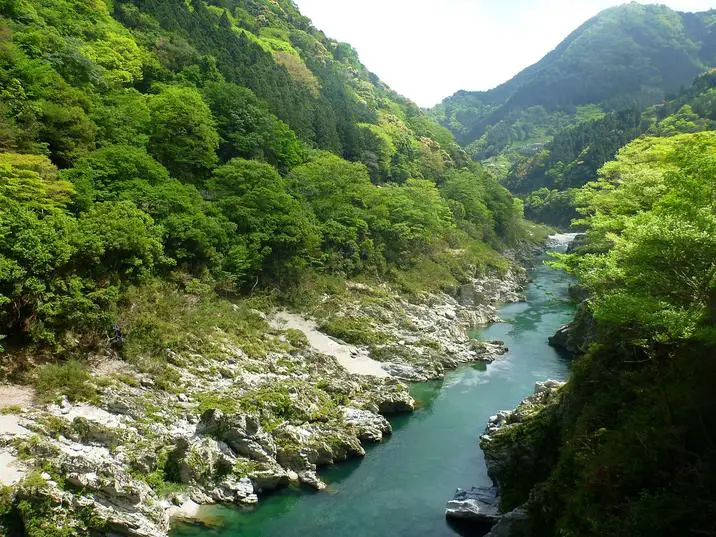
A scenic gorge found in the mountainous region of Tokushima, Japan.
What to see or do: Take a boat ride down the winding river or hike along the trails to admire the towering cliffs and stunning waterfalls.
Don’t miss: The famous “Koboke narrows” section of the gorge, where the river dramatically narrows and the rock formations appear to tower above you.
Insider travel tips: Visit in the fall for a beautiful display of autumn foliage. Be prepared to get wet on the boat ride, so dress accordingly.
It’s also recommended to wear comfortable shoes for hiking.
2. Iya Valley
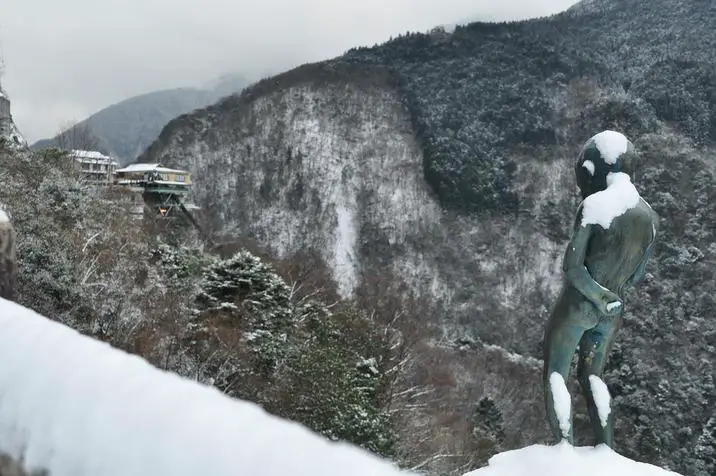
Iya Valley is a lush mountainous destination in Tokushima prefecture, Japan, featuring stunning natural landscapes, traditional houses, and local culture.
What to see or do: – Explore the Oboke and Koboke Gorges for their dramatic cliffs, rapids, and clear emerald waters.
Don’t miss: – The mysterious and spooky statue of the peeing boy, the symbol of Iya Valley.
Insider travel tips: – Wear comfortable shoes for hiking and exploring the valley terrain.
3. Awa Odori Kaikan
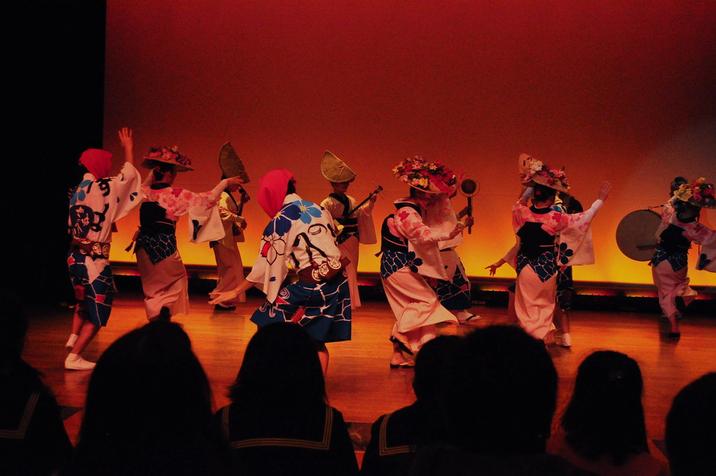
The Awa Odori Kaikan is a cultural museum dedicated to the Awa Odori Festival, a traditional dance festival that takes place every August in Tokushima, Japan.
What to see or do: Visitors can learn about the history and significance of the Awa Odori festival through interactive exhibits and multimedia displays. There is also a performance space where visitors can watch live Awa Odori dance performances.
Don’t miss: Be sure to catch one of the daily Awa Odori shows, featuring professional dancers in colorful traditional costumes. You can also try your hand at Awa Odori dance moves with the help of interactive exhibits.
Insider travel tips: Visit during the summer months to experience the Awa Odori festival in person.
Plan ahead and book tickets in advance for the festival and shows at the Awa Odori Kaikan, as they can sell out quickly.
4. Naruto Whirlpools
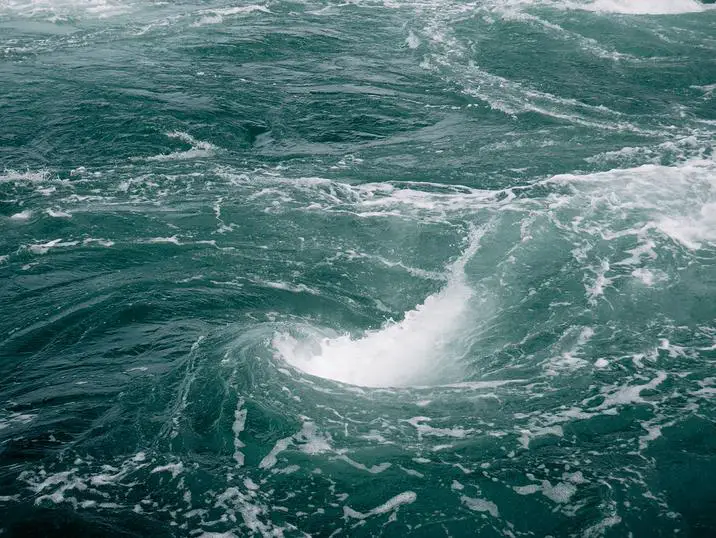
The Naruto Whirlpools are a natural phenomenon caused by the tidal currents in the Naruto Strait, located in Tokushima prefecture, Japan.
What to see or do: Visit Naruto Whirlpools Observation Deck to witness the swirls and vortexes forming in the strait. Take a closer look by riding on a sightseeing boat to see the whirlpools from up close.
Don’t miss: Experience the amazing view of the whirlpools during both high and low tide. At the Uzu no Michi Promenade, you can also enjoy walking while admiring the stunning view of the whirlpools.
Insider travel tips: It is better to visit during low tide when the whirlpools are more visible. Check the tide schedule beforehand.
The observation deck tends to get crowded, so it is recommended to arrive early in the morning or late afternoon to avoid the crowds.
5. Ryozenji Temple

Ryozenji Temple is a Buddhist temple located in Tokushima City, Japan. It is one of the 88 temples on the Shikoku Pilgrimage and is considered the first temple in the pilgrimage.
What to see or do: Visitors can explore the temple grounds and admire the various buildings and statues. The main hall contains a statue of the temple’s founder, and there is also a museum displaying religious artifacts.
Take part in Shikoku Pilgrimage by receiving a temple seal book (御朱印帳, Goshuin-cho) and collect the stamps of all 88 temples.
Don’t miss: The five-storied pagoda is a prominent feature of the temple and is considered the tallest wooden pagoda in Japan. The pagoda is a national treasure and is beautifully illuminated at night.
Insider travel tips: If you plan to complete the Shikoku Pilgrimage, it is recommended to start early in the morning to avoid the crowds and the heat in the summer.
It’s a 15-minute walk from JR Ryozenji Station to the temple.
Consider attending the annual Lantern Festival (Ryozenji Manto Kuyo-e) held on August 15th where thousands of lanterns are lit, giving the temple a magical atmosphere.
6. Tokushima Castle Ruins
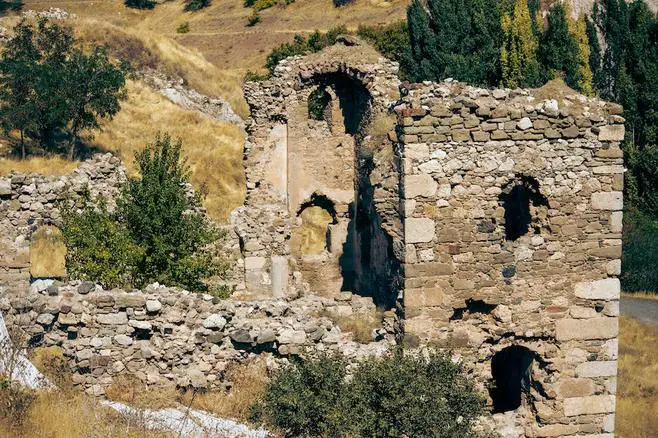
Tokushima Castle Ruins is a historical castle located in Tokushima city, Japan.
What to see or do: Visitors can explore the castle ruins and the surrounding park area.
There is a walking path that leads around the castle grounds, showcasing the remaining structures and offering stunning views of the city.
Don’t miss: Don’t miss the chance to see the impressive castle walls and moat, which give a sense of the castle’s original grandeur.
Additionally, make sure to visit the observation deck for a panoramic view of the surrounding city.
Insider travel tips: The best time to visit the castle ruins is in spring, when the cherry blossoms bloom and the entire park is awash in beautiful pink flowers.
Additionally, be sure to wear comfortable walking shoes, as the castle grounds can be quite hilly and uneven.
7. Konsenji Temple

Konsenji Temple is a beautiful Buddhist temple located in Tokushima, Japan. It was founded in the 8th century and is renowned for its stunning architecture and serene atmosphere.
What to see or do: Visitors to Konsenji Temple can explore its many halls and buildings, each of which is adorned with intricate carvings and beautiful artwork.
The temple grounds also feature several beautiful gardens, including a traditional Japanese garden and a meditative rock garden.
Don’t miss: Be sure to check out the striking pagoda, which stands over 20 meters tall and provides visitors with stunning views of the surrounding area.
Additionally, don’t miss the temple’s famous Buddha statue, which is over 500 years old and is considered a national treasure.
Insider travel tips: For a truly unique experience, consider visiting Konsenji Temple during one of its many festivals or special events. During these times, visitors can witness traditional Japanese performances and even participate in ancient Buddhist rituals.
Additionally, be sure to wear comfortable shoes and dress appropriately, as the temple grounds are expansive and can involve a significant amount of walking.
8. Hiwasa Turtle Beach

Hiwasa Turtle Beach is a popular beach located in the town of Hiwasa in Tokushima Prefecture, Japan. The beach is famous for its sea turtles which come to the shore to lay their eggs.
What to see or do: Visitors can enjoy the beautiful scenery of the beach, take a swim in the ocean, and watch the turtles lay their eggs during the nesting season which runs from May to August.
The beach also has a conservation center where visitors can learn about the local turtle population and conservation efforts.
Don’t miss: Make sure to take part in the nightly turtle watches where visitors can watch the turtles come ashore to lay their eggs.
It is an unforgettable experience!
Insider travel tips: – The best time to visit is during the summer months when the turtle nesting season is in full swing.
9. Muroto Cape

Muroto Cape is a scenic coastal cape located in the southern part of Shikoku Island in Japan.
What to see or do: Enjoy the stunning views of the Pacific Ocean from the top of the cape. Visit the Muroto Global Geopark, which showcases the geological history of the area with informative exhibits.
Take a coastal walk along the rugged coastline or go for a swim in the crystal-clear waters.
Don’t miss: The Muroto Observatory, which offers panoramic views of the cape and the surrounding coastline. The Amagi Tunnel, an eerie tunnel with a long history that connects the two sides of the cape.
Insider travel tips: Visit early in the morning to avoid crowds and witness the sunrise over the ocean. Consider taking a rental car as public transportation is infrequent in the area.
Try the local cuisine such as katsuobushi (smoked and dried tuna) and skipjack tuna sashimi, both specialties of the region.
10. Mount Bizan
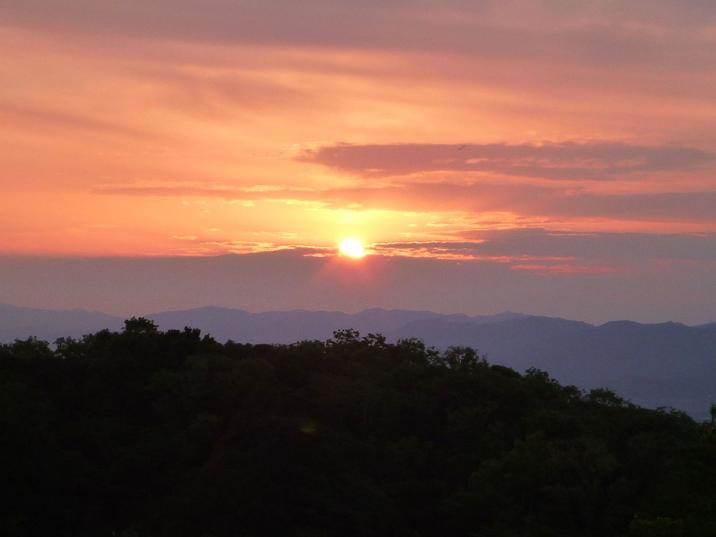
Mount Bizan is a mountain located in the city of Tokushima, Japan. It has an elevation of 280 meters.
What to see or do: Visitors can take a cable car to the top of the mountain and enjoy panoramic views of the city and surrounding landscape.
There is also a restaurant and souvenir shop at the top.
Don’t miss: The view of the city lights at night is especially beautiful. Additionally, there are several walking trails around the mountain that offer breathtaking views of the surrounding scenery.
Insider travel tips: It’s best to visit Mount Bizan on a clear day for the best views. Also, there is a discount for purchasing a round-trip cable car ticket.
Finally, it’s a good idea to wear comfortable shoes for the walking trails.
11. Tairyuji Temple

Tairyuji Temple is a stunning Buddhist temple located in the city of Tokushima, Japan.
The temple has a rich history dating back to the 8th century and is considered to be one of the most important centers of the Shingon sect of Japanese Buddhism.
What to see or do: Visitors can explore the temple’s magnificent architecture and beautiful gardens, which are particularly impressive during the spring and fall.
The main hall, known as the “Alley of the Roaring Dragon,” is an impressive sight with its intricate carvings and colorful paintings.
Don’t miss: Be sure to take a walk through the temple’s stunning gardens, which feature a variety of different plants, including cherry blossoms, azaleas, and maples.
Additionally, visitors should be sure to check out the temple’s impressive collection of religious artifacts, including statues, scrolls, and other items.
Insider travel tips: -The temple can get quite busy, especially during peak tourist season, so it’s best to arrive early in the day to avoid crowds.
12. Shinmachi River Street
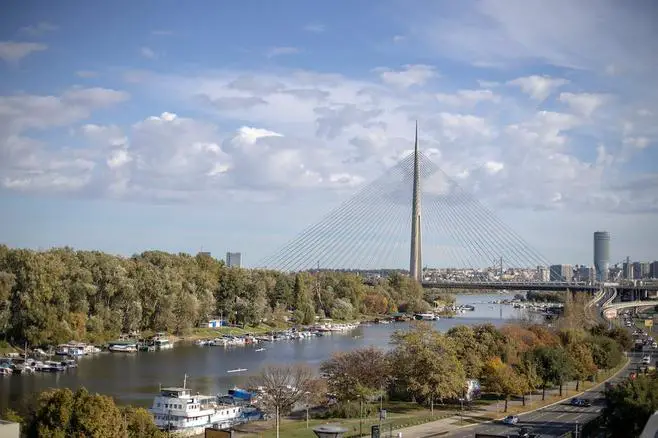
Shinmachi River Street is a charming and picturesque street located in Tokushima, Japan.
What to see or do: Stroll along the pedestrian-only street and take in the traditional wooden buildings, beautiful lanterns, and scenic views of the Shinmachi River.
Don’t miss: The Kamemaru-za Theater, a historic kabuki theater that dates back to 1911, and the Awa Odori Kaikan, a museum dedicated to the Awa Odori dance festival, one of Japan’s most famous summer festivals.
Insider travel tips: Visit during the Awa Odori Festival in August to see the street come alive with dancers, music, and vibrant performances. Don’t forget to try the local specialty, Tokushima Ramen, at one of the many charming restaurants on the street.
13. Tokushima City Museum
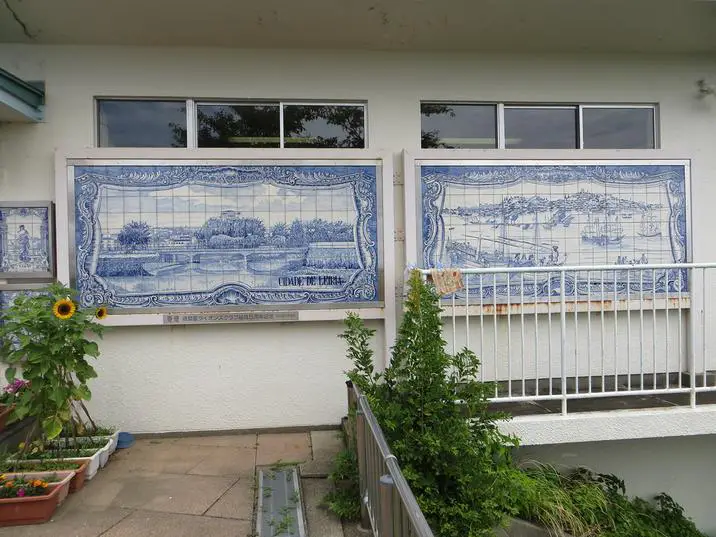
The Tokushima City Museum is a local museum located in Tokushima City, Japan. It explores the history and culture of the Tokushima Prefecture through its displays and exhibitions.
What to see or do: Visitors can see a variety of exhibits, including historical artifacts, locally crafted pottery, and works by local artists.
The museum also features exhibits on traditional performing arts unique to Tokushima, such as the Awa Dance Festival and puppet theater.
Don’t miss: One notable exhibit at the museum is a replica of a Jomon Period dwelling, showcasing what everyday life was like for early settlers in the region.
Another exhibit displays ancient burial mounds found in the area, providing a glimpse into the area’s ancient past.
Insider travel tips: – The museum is closed on Mondays and national holidays.
14. Awagin Hall

Awagin Hall is a concert hall located in Tokushima City, Japan. It is known for its unique architecture designed by famed architect Arata Isozaki.
What to see or do: Visitors can attend concerts and performances held at Awagin Hall throughout the year.
The hall is often used for classical music concerts but also hosts a variety of other genres including jazz and traditional Japanese music.
Don’t miss: Take a moment to appreciate the stunning architecture of the building, including the unique roof design that resembles a giant paper lantern.
Insider travel tips: -Some performances may require advanced booking, so check the schedule in advance.
15. Awa Jinja Shrine
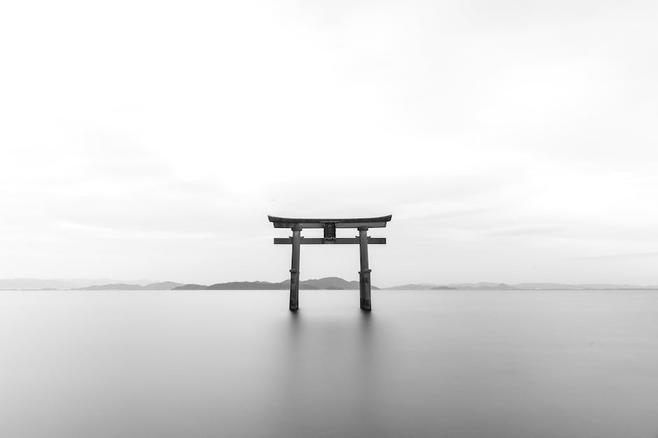
Awa Jinja Shrine is a beautiful Shinto shrine located in the city of Tokushima, Japan. It’s dedicated to the god of the Awa region and is one of the most important shrines in the area.
What to see or do: Visitors can explore the grounds of the shrine, which include several beautiful buildings and structures. The main hall of the shrine is particularly impressive, with its majestic architecture and intricate decorations.
Visitors can also take part in traditional Shinto rituals and learn about the culture and history of the region.
Don’t miss: The highlight of a visit to Awa Jinja Shrine is the annual Awa Odori festival, held in August.
During the festival, thousands of dancers in traditional costume perform an energetic and colorful dance in the streets around the shrine.
Insider travel tips: Make sure to arrive early in the day to beat the crowds and enjoy the peaceful atmosphere of the shrine. If you’re visiting during the Awa Odori festival, be prepared for large crowds and book accommodation in advance.